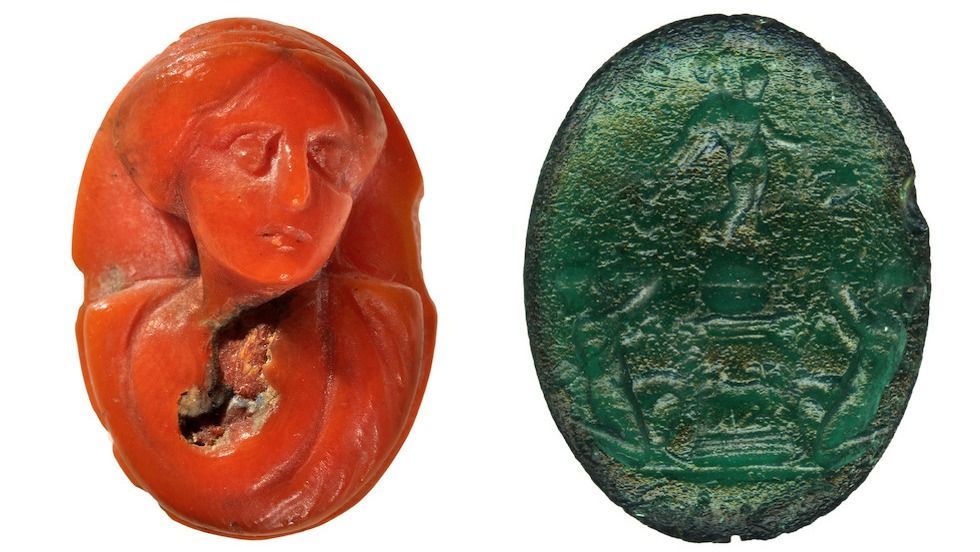Jeden bych řek ', že pustej fotku toho quinaria, když je tak vzácný, že ho někteří zkušení numismatici nikdy neviděli....
Zajímavý článek, díky 👍
"Pompeii of the North" revealed a treasure trove of coins and gems
Categories: Nálezy nejenom s detektorem v západní Evropě
A treasure trove of rare silver and bronze coins from the end of the 1st century BC was recently discovered at the archaeological site of ancient Claterna. The collection consists of more than 3 000 coins and 50 gems, many of which were decorated with images of ancient Roman deities and important buildings.
Claterna (Claternae) was a Roman city founded on the site of an Etrusco-Celtic settlement in the first half of the 2nd century BC. It is strategically located on the Via Aemilia between the colonies of Bononia and Forum Cornelii. It reached great prosperity in the 1st century BC, when it acquired the status of a magistrate, for the next hundreds of years the largest city in the wider area. At the height of its glory, the city covered an area of 30 hectares, not including the suburbs.
In the 3rd century, the city was the target of repeated barbarian raids. It gradually declined and was completely abandoned by the beginning of the 6th century. Its ruins were covered with soil and its location forgotten, making it a rare example of a Roman urban centre that was never rebuilt. The first excavations began in 1891 and uncovered the remains of roads, sewers, bronze artefacts and mosaic floors of luxury villas. These discoveries were re-filled to protect them. A systematic programme of large-scale excavations began in 2005 and continues to this day.
Until now, experts believed that the settlement functioned as a common stopover for travelers between major cities. Previous excavations at Claterna have uncovered a forum, streets, dwellings with multicoloured, colourful mosaics and a public bath. The new discoveries are forcing archaeologists and historians to reconsider the city's true significance.
"We are faced with the largest unstratified archaeological area in northern Italy," Lucia Borgonzoni, Italy's secretary of state at the Ministry of Culture, said in a statement. "Given the importance and the number of finds uncovered so far, we can probably speak of a Pompeii of the north," she added in the ministry's press release.
The latest survey has yielded thousands of coins made of bronze and silver. One of particular interest is the quinarius, a rare silver coin from 97 BC that was hidden in the remains of a corridor of a former theatre. According to Coin Week, these coins are "so rare that many experienced collectors have never seen one." The coins found also confirmed the age of the building, dating back to the late first century BC. According to Lucia Borgonzoni, the city was "a trading center with direct contacts to Rome."
In addition to the coins, archaeologists also discovered dozens of coloured gems engraved with images of deities and important buildings, including a theatre. Excavations at the site will continue, although only about a tenth of the city has been explored so far. The Ministry of Culture hopes to be able to open the ancient theatre to the public in the future. The vast majority of the city still awaits its unveiling.
Roman Nemec
Sources: sciencetimes.com, allthatsinteresting.com, livescience.com

Claterna excavations

Excavation of a Roman villa with mosaics at Claterna

The collection consisted of over 3,000 coins

Claterna mosaic

one of the treasure coins

Two of the fifty gems with engravings

a map of the city in today's landscape

the different parts of the city in the present landscape

a digital reconstruction of the theatre in the Claterna
The article is included in categories:
- Archive of articles > Archaeology > Finds and rescue research abroad > Nálezy nejenom s detektorem v západní Evropě
Post
No vzácný.... Minimálně dva jsem v ruce měla.😁Ale nenachází se běžně. A určitě ne z prvního století před naším letopočtem, to člověk spíš najde republikánský denár. A skoro bych řekla, že ta první mince (nejsou tam rozměry) to je, ty tehdejší quinarie tak vypadaly 😉.




